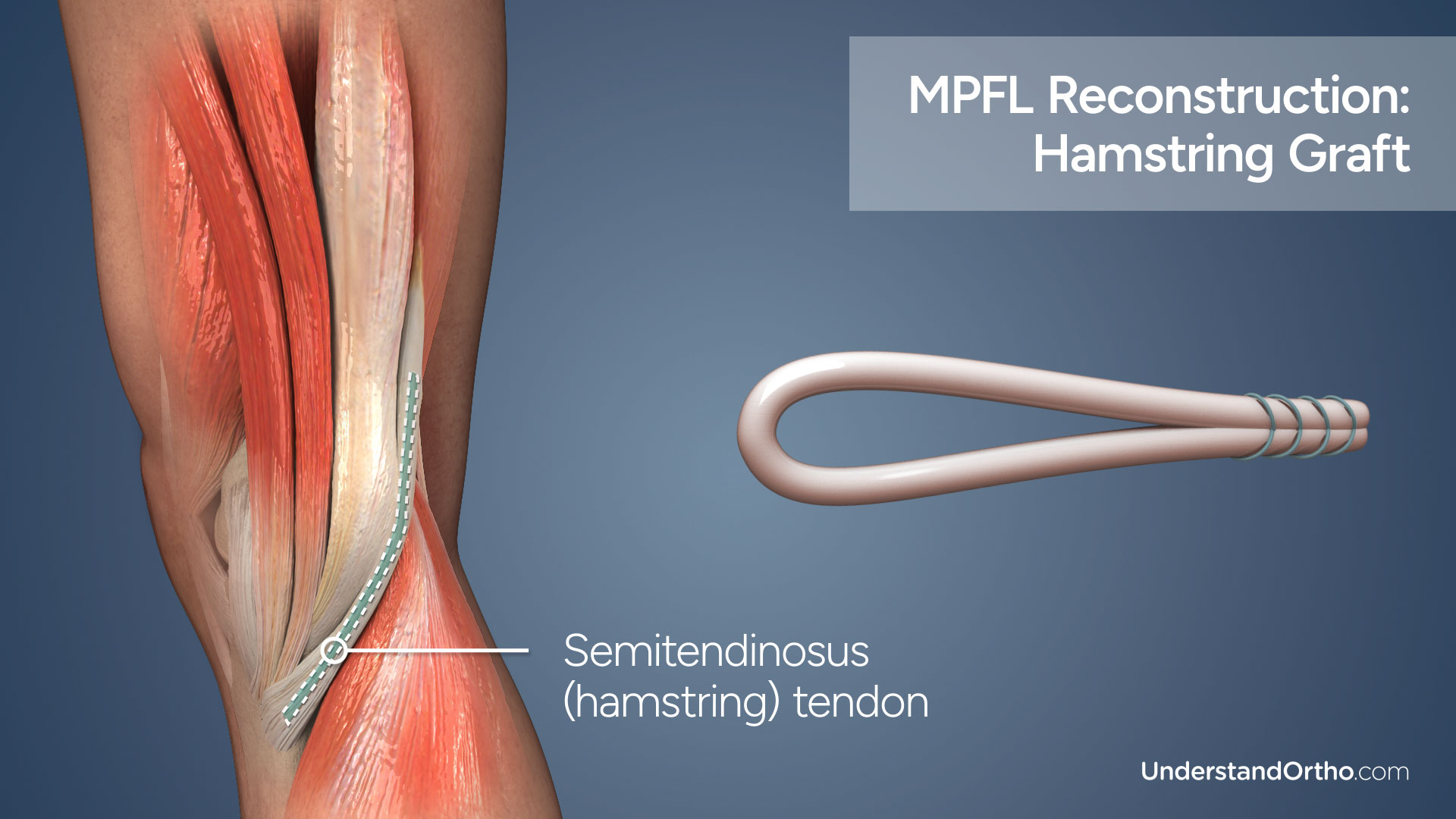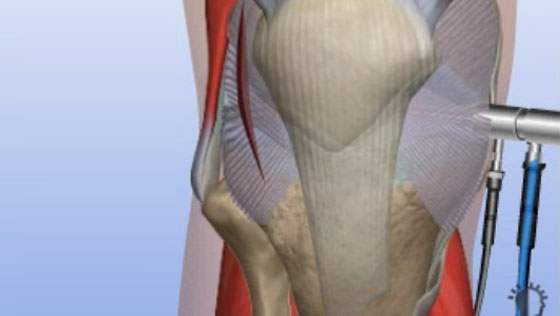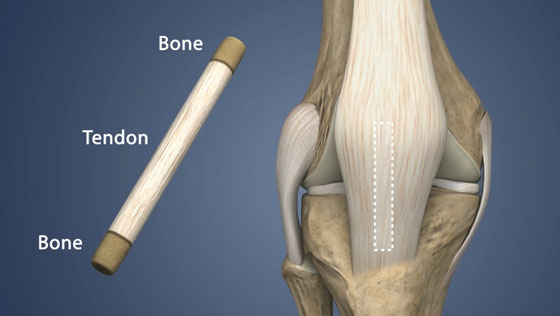What is MPFL reconstruction?
MPFL Reconstruction is a surgical procedure that is typically performed arthroscopically in order to replace a damaged MPFL (medial patellofemoral ligament) with graft material, either from the patient’s own body (autograft) or from a donor (allograft).
Key statistics about MPFL Reconstruction
- 94-100% of patellar dislocations are accompanied by injury to the MPFL[1]
- 3% of all knee injuries are MPFL tears[1]
- MPFL injuries most commonly occur in young women between 10-17 years old[1]
- A recent study shows that more than 90% of patients returned to sport after MPFL Reconstruction[2]
Why is MPFL Reconstruction performed?
MPFL Reconstruction is often required following MPFL damage in order to stabilize the knee and allow a return to normal activity.
Patellar instability (also called patellofemoral instability) is a condition in which the patella slips out of the trochlea, either partially (subluxation) or fully (dislocation). The MPFL is usually torn or stretched in the process, making future dislocations more likely.

Knee Anatomy
The knee joint is formed by three bones: the femur (thigh bone), the tibia (shin bone), and the patella (kneecap).
The patella rests in a groove on your femur called the trochlea, and glides smoothly in this groove when the knee bends and straightens.
Ligaments connect bones to other bones and provide stability to the joint. The medial patellofemoral ligament (MPFL) is a ligament on the inside of the knee that helps to stabilize the patella in the trochlea by preventing it from moving or dislocating outward.

Who needs MPFL Reconstruction?
MPFL Reconstruction is a commonly recommended surgical procedure for patients who have experienced repeated patellar dislocations. Chronic patellar instability is most likely to affect younger patients.
MPFL Reconstruction is necessary to address MPFL damage that cannot be repaired or treated with nonsurgical measures.
How is the MPFL Hamstring Graft prepared?
There are numerous graft material options available for MPFL Reconstruction, which are either autografts (from the patient) or allografts (from a donor).
A hamstring autograft is one of the strongest grafts used in MPFL Reconstruction. The semitendinosus hamstring tendon is harvested and folded over to increase strength.

How is MPFL Reconstruction performed?
- The surgeon will make small incisions around the knee joint and the arthroscope will be inserted into one of the incisions.
- Saline solution is pumped into the joint to expand it and improve visualization.
- Images from the arthroscope are sent to a video monitor where the surgeon can see inside the joint.
- The damaged portions of the MPFL are removed and the bones are prepared for the graft.
- After the graft is harvested and prepared, anchors are placed into the patella and one end of the graft is attached.
- A tunnel is drilled in the femur and the free end of the graft is inserted and secured with a screw.
- Finally, the saline solution is drained, instruments are removed, and the incisions are closed using sutures.

What are the risks of MPFL Reconstruction?
Risks associated with MPFL Reconstruction may include:
- Infection
- Blood clots
- Knee stiffness
- Recurrent patellar dislocation
- Patellar fracture
How long does it take to recover from MPFL Reconstruction?
-
24 hours after surgery
Most patients are able to return home the same day as their procedure. A physical therapy routine will be established by the surgeon and physical therapist, and pain medication may be prescribed. Most patients are required to wear a knee brace and keep weight off of the affected leg. -
2 weeks after surgery
Any non-dissolvable sutures are removed, and bruising and swelling begin to subside. -
4-6 weeks after surgery
Most patients can discontinue using the knee brace and crutches and walk with full weight on the affected leg. -
4 months after surgery
Most patients are able to return to driving and normal activity. -
4-6 months after surgery
Most patients are fully recovered from MPFL Reconstruction.
What are the results of MPFL Reconstruction?
MPFL Reconstruction is a safe and effective procedure performed to restore knee function to patients with MPFL damage and patellar instability. Patients who undergo MPFL Reconstruction have a high rate of return to sport and a low rate of complications.
Find an Orthopedic Doctor in Your Area




